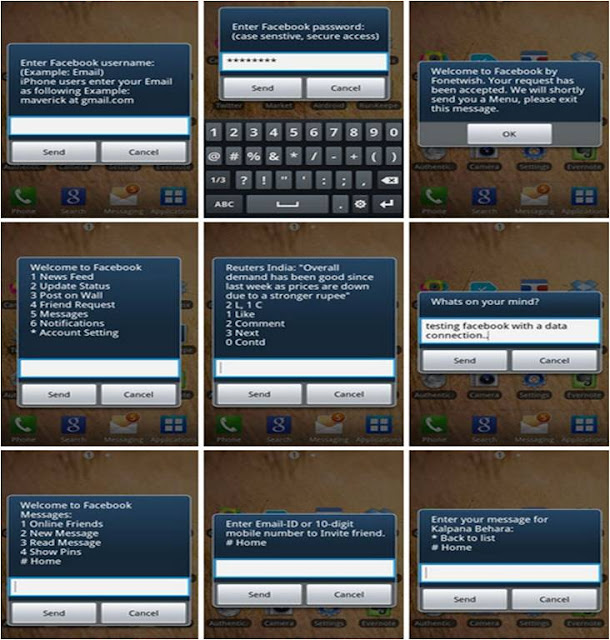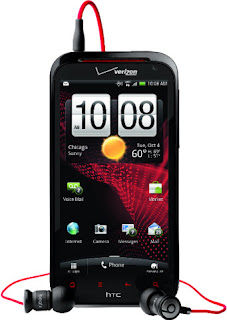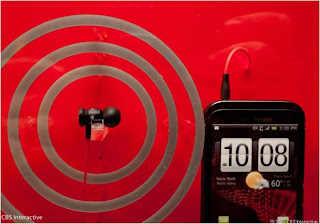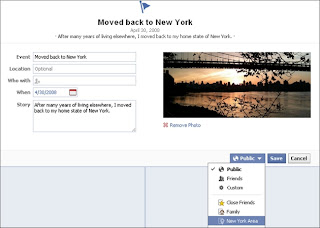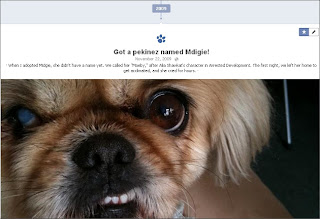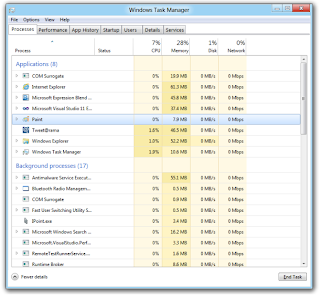Not unlike an artfully created but tiny-portioned appetizer leading into a flavorful and filling main course that remains stuck in the kitchen, my first hands-on experience with Windows 8 left me eager for what was coming but disappointed with what was set in front of me.
Microsoft lent out Windows 8 tablets to attendees at the end of the Build conference preview yesterday, surprisingly running an earlier version of the in-development operating system than the one that had been demonstrated as functional earlier in the day.
The operating system represents a major change for the company and its fans, as Windows wholeheartedly embraces and bets on touch-screen interfaces. Julie Larson-Green, vice president in charge of Windows 8, said yesterday, "People want to and expect to be able to touch their screens." She offered up a personal anecdote about a friend who roasts coffee professionally and was frustrated going from the production line where the screens are touch-based to his office, where they weren't.
Microsoft lent out Windows 8 tablets to attendees at the end of the Build conference preview yesterday, surprisingly running an earlier version of the in-development operating system than the one that had been demonstrated as functional earlier in the day.
The operating system represents a major change for the company and its fans, as Windows wholeheartedly embraces and bets on touch-screen interfaces. Julie Larson-Green, vice president in charge of Windows 8, said yesterday, "People want to and expect to be able to touch their screens." She offered up a personal anecdote about a friend who roasts coffee professionally and was frustrated going from the production line where the screens are touch-based to his office, where they weren't.
I've had the same experience. The very first thing I did when testing out Google's Chromebook earlier this year was involuntarily poke my finger at the screen. The expectations of smartphones and point-of-sale interactions have conditioned us to expect screens of all sizes to respond to touch input.
Whereas Windows 7 was a big change because it finally made Vista's architecture palatable, Windows 8 is more like coming to your favorite restaurant and finding it with an entirely new decor, arrangement of tables, and expanded menu. And while we can read the menu and have a decent idea of what we're being served, we don't know yet the precise smell or taste of the food.
The biggest change from Windows 7 is the much-discussed Metro interface. Is it merely a touch-tacular visual skin, Windows 7 with a large, haptic Mango sitting on top? Or is it more of a dual offering, giving you two different ways to interface with their programs and apps depending on how you're using the computer at any given moment?
Cynics would have you believe the former, Microsoft the latter. The truth is hard to parse right now, although if Microsoft pulls this off, it will have effected a major change in how we interact with our computers and devices.
Frankly, Windows 7 was already a decent supporter of touch screens and gestures, so betting on mobile touch screens isn't a massive leap of logic. What makes Windows 8 potentially revolutionary is that it's tying Metro, the first distinctly non-Windows experience ever, to the popular adoption of touch screens. For whatever you call Metro, whether it's Windows Phone 7's Mango on growth hormones or a grand terminal of multilayered interaction, Metro is Microsoft's first major interface that does not in any way relate to the "windowed" experience from which the operating system derives its name. Microsoft is saying that traditional Windows is not enough on its own anymore.
Getting started in Windows 8 was remarkably easy, nearly as simple as firing up a Chromebook for the first time. On the tablet Microsoft provided, Windows 8 booted in a few seconds to a green screen, where I filled out a name for the tablet, logged in to Wi-Fi, and added personal information such as a username. Much like Google and Chromebooks, you can sign in using your Windows Live ID. The whole process from pushing the power button to coming face to tile with Metro took between 20 and 30 seconds.
Internet Explorer 10
Benchmarking startup and shutdown times on the Windows 8 tablet was easy, because it actually took me longer to type in my password on the touch-screen keyboard than it did for the tablet to get to the log-in screen. Three cold boots averaged 5.2 seconds. Shutdown took longer, at around 11 seconds over three shutdowns. While the shutdown time is actually comparable with where Windows 7 is now, the boot time is faster by around 30 to 35 seconds.
Windows 8 launches by default into the Metro interface, which is remarkably intuitive in some ways. Instead of icons, you're confronted with groups of tiles. One of the key features that was demoed at Build but wasn't working in the tablets that we were given was the ability to customize the tiles. We saw Jensen Harris, director of program management for the Windows 8 User Experience, change tile size and location, and move tiles between groups, and create new groups of tiles with a few quick swipes of his fingers against the screen. Frustratingly, we could not actually do this ourselves.
The number of apps supported by Metro was few, and all had been created by Microsoft's summer interns in a handful of weeks. Despite the obvious limitations, they point to the ability for Windows 8 to leap to the forefront of sharing data across multiple services, including Facebook, Twitter, Flickr, and Microsoft's own Windows Live tools. Other apps showed the potential of displaying real-time information on the screen, such as tweets, social network status updates, weather, stock market updates, and news headlines via RSS.
Windows 8 brings a lot of legacy support with it. Microsoft says it will work well on all hardware that currently supports Windows 7, a user-friendly contrast to Apple's forced hardware obsolescence.
Windows 8 Task Manager
Metro would be pretty, but little more than eye candy without being baked on top of its Windows foundation. That foundation provides something the world has yet to see elsewhere: a tablet that's not underpowered. Windows 8 can talk to Bluetooth peripheral keyboards, such as the one Microsoft provided, as easily as it can communicate with printers. Instead of having to bootstrap contortions of cloud-based drivers onto systems that were never intended to recognize odd physical plug-ins, stuff like that just works. Or at least, that is Microsoft's theory. There were no printers available to test it on. In Windows 8, swiping from the right edge of the screen to the center will reveal options such as Search and Share, as well as a Devices button that recognizes external monitors, drawing tablets, and mice.
It turns out that Windows 8 has actually rethought how Windows manages drivers. Basically, there's a new class of device driver that will work across a broad range of devices. Plug something in, and it'll just work, goes the line, and I was surprised to see this borne out when I plugged in my Droid Bionic. Instead of searching for the driver as Windows 7 does, which delays my ability to access the phone's SD card, it was available almost instantly.
Handwriting support has been expanded in Windows 8 from Windows 7, so that the system makes it easier to accept input from styluses and convert written notes to legible characters.
Windows 8 has also rethought how to do windowed interfaces, so be prepared to experience a whole lot of Microsoft Office-style ribboning. The only good news about this is that Windows' ability to pick up on touch gestures has been so vastly improved since Windows 7 that you'll at least be able to do things without poking at the screen like a kind of demented woodpecker.
Windows 8 Start screen
Installing a program that's not directly supported by Metro will bump you over to the traditional interface and create a desktop icon for it there, but it will also create a tile for that program in Metro. Tap the tile and the program opens in traditional Windows.
Also in traditional Windows is a new Task Manager. Long since ignored by Microsoft, this way-overdue redone Task Manager creates an in-grid heat map of high-usage programs, as well as helping you monitor more than just memory. You can drill down to your CPU, Memory, Disk, or Network usage.
No discussion of a new version of Windows would be complete without talking about security, and that appears to be slightly further along than other parts of Windows 8. Metro apps run with runtime restrictions, which appear to function like Android app permissions. However, Microsoft promises to have tighter control over its Windows Store than Google has placed on its Android Market.
Interestingly, Metro app developers will have a way to create their own cryptography certificates, which cuts down on user errors and the fees incurred when purchasing certificates from a recognized authority.
Windows 8 lock screen
The Internet Explorer 9 Web site filter, which has been recognized by at least one study for being extremely effective at blocking malware and malicious sites, has been expanded. The improved SmartScreen filter has a built-in phishing and social-engineering attack blocker that is now integrated with standard programs and Metro apps, and it'll warn you when a program attempts to do something risky.
For log-ins, Windows 8 has several options. There's the traditional password, as well as a PIN option. There's a picture password choice, too, which is quite cool. You upload a picture, and then create a simple drawing over it using straight lines, circles, and dots. When you log in, you'll be presented with the image and asked to redraw the password over it. And since it's Windows--getting bored of that yet?--it natively supports multiple user accounts, unlike Android or iOS tablets.
There's also a secured boot feature, which enhances Windows' protection against low-level attacks like rootkits. Boot components in the new OS are authenticated to prevent unauthorized tampering, and Windows 8 also comes with two highly useful "reinstall" features. The "Refresh" option keeps all your data and files unaltered, but reloads Windows entirely. It's not clear yet what happens when a file that looks legitimate, like a Word doc, turns out to be malware--presumably, Windows clears it out during the refresh. The second reinstall option is called "Reset" and it wipes the computer and restores it to its factory state. Both of these work without install disks or having to download other recovery tools.
There's no doubt that Windows 8 is a major change for the company, and potentially a disruptive one for the market, as Microsoft aims to be the first company to successfully merge its mobile and desktop operating systems.
But will people want to use it? A lot of what Microsoft is doing with Windows 8 depends on a nearly measurable ton of factors. How soon will the operating system be ready? How will Apple and Google respond, and will their responses make it to market before Windows 8 does? I was prepared to dislike it, since I'm more impressed with the concept of Windows Phone 7 than I am with the execution of it, but anecdotal market research that Microsoft shared yesterday in the form of video testimony indicated that it could be very popular. One woman expressed disbelief that the device she was using was, in fact, Windows. She's probably not the only one.
 1.00 per day for unlimited usage.
1.00 per day for unlimited usage. 1.00 per day for unlimited usage.
1.00 per day for unlimited usage.


